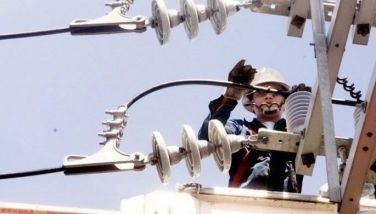Italian architect urged shift to earthquake-proof designs
MANILA, Philippines - An Italian architect advocating environment-friendly designs has urged local designs and builders to fully incorporate earthquake-proof principles when building structures in the country.
Romolo Nati, executive chairman and chief executive officer of Italian-Filipino firm ITALPINAS Euroasian Design and Eco-Development Corp. (ITPI), said Italy and the Philippines have many similarities when it comes to natural calamities, particularly volcanic activity and earthquakes, which is why the two countries can learn from each other in terms of construction.
“For Italians, building quake-proof structures is not just an option. Every time we design in Italy, we have to consider that we are building something in an earthquake-prone country,†said Nati, who took up architecture at the La Sapienza University in Rome.
Nati said one way to prevent structural damage brought about by earthquakes is by building tubo cavo (hollow tube) or tube-shaped structures, which is the best shape to react to stress and opposing forces within the earth.
“The shape of the building must be done in such a way that it optimizes the building’s capability to adapt to seismic activity. The tube structure is the best shape to withstand forces and ground motion brought about by earthquakes,†he said.
Furthermore, he pointed to bamboo as an example from nature: its tubular structure combines strength and lightness, having evolved to withstand stress in a way that modern architectural principles can emulate.
Nati set up ITPI with business partner Jojo Leviste in 2009. The company put up a 10-story condominium building in Cagayan de Oro City, the Primavera Residences, which is the first and only sustainable building in Mindanao.
ITPI is an affiliate of renewable energy firm Constellation Energy Corp., headed by Leviste.
Nati said since the Philippines is situated in the Pacific Ring of Fire, a region encircling the Pacific, there are frequent seismic and volcanic activities that occur.
According to the Asia-Pacific Environment Outlook released by the United Nations Environment Programme, the country experiences an average of five earthquakes a day due to its location between two of the world’s most active tectonic plates.
He said Italy, on the other hand, lies at the meeting point of the European and African tectonic plates, experiences frequent geological movement, and has well-defined fault lines, which earned its reputation as one of the most earthquake-prone countries in the world.
According to Nati, apart from the building’s design and size, the structure should use materials that flex rather than resist ground motion during earthquakes.
“There is a misconception that buildings have to be very rigid to survive earthquakes when in fact, they have to be flexible. Structures made from bricks and stones are very rigid, and in order to retrofit them to make them a safer place in case of earthquakes, they need to be reinforced with steel structures to render them earthquake-resistant,†he said.
Leviste, president of ITPI, said Nati has made sure all these earthquake-proof principles have been incorporated in ITPI’s premier condo project, Primavera Residences.
- Latest
- Trending






























